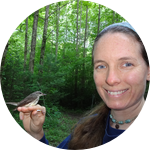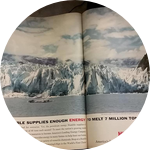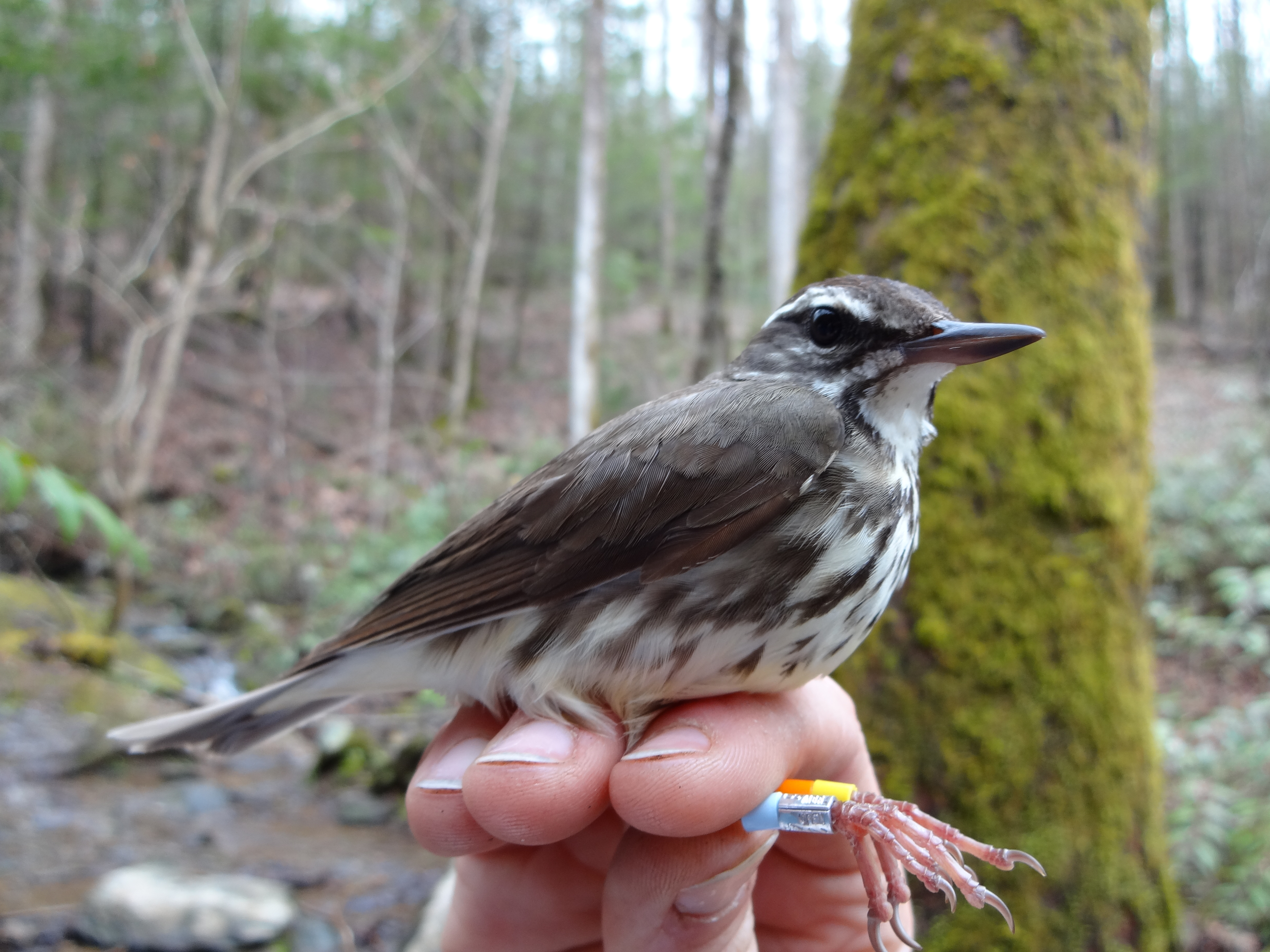About This Project
An invasive insect, the Hemlock Woolly Adelgid (HWA), is causing Eastern Hemlock tree decline in the Appalachian Mountains. The Louisiana Waterthrush (LOWA) is a bird that may indicate the degree to which HWA threatens riparian ecosystems with declining hemlock. By studying LOWA habitat use and reproductive success, I aim to determine how hemlock decline affects the birds and riparian ecosystem condition. Such knowledge is important for conserving the rich biodiversity of the Appalachians.
Ask the Scientists
Join The DiscussionWhat is the context of this research?
Once infested, hemlocks can die within 5 years. Current research has investigated consequences of HWA infestation and treatment strategies. Few studies have taken advantage of this natural experiment (chemically treated vs. untreated areas) to explore if/how a bioindicator (i.e., a species that represents ecosystem condition) like LOWA, presumed to be adapted to one forest type and associated abiotic conditions, may respond to shifts in forest structure and composition. Mapping LOWA territories, monitoring nests and provisioning, and surveying vegetation and hemlock health will uncover potential impacts of hemlock decline on LOWA and implications for riparian ecosystem condition. Increasing our understanding of HWA infestation will help park officials manage for sustaining biodiversity.
What is the significance of this project?
Riparian ecosystems are some of earth's most diverse and threatened. My research seeks to inform best management practices to conserve riparian ecosystem condition.
Great Smoky Mountains National Park in eastern Tennessee, USA, boasts over 3200 km of riparian habitat and is the nation's most visited park. It has environmental, economical, and cultural importance as a source of national pride. Conserving the Smokies is necessary for educating and inspiring future scientists. As part of my project, I will work with Great Smoky Mountains Institute at Tremont to educate citizens about HWA infestation, LOWA as bioindicators, and actions citizens can take to conserve riparian areas. Involving citizens in data collection is essential to creating lasting connections with nature.
What are the goals of the project?
My goal is to determine breeding LOWAs’ relationship(s) to hemlock decline by studying habitat use/selection, reproductive success/fitness, and provisioning. Study sites include chemically treated and untreated hemlocks. After conducting vegetation and hemlock health surveys, I will analyze LOWA breeding data with habitat characteristics and hemlock condition. I will report my results to the national park to provide hemlock health information in unmonitored areas. Research began in 2015 and will continue in 2016.
My project also utilizes LOWA as a tool for citizen science education. By involving volunteers in data collection and leading field based classes for children, I will engage the public with my project and teach the importance of conservation efforts to ecosystem condition.
Budget
This project is impossible without the assistance of a skilled and experienced field technician. LOWA build highly camouflaged nests that can take weeks to find; locating and monitoring nests for all of my targeted pairs is essential to achieve my project's objective. In order to attract competitive and qualified applicants, I want to offer $2500-$3000 for a period of 10 weeks. I have received several small grants to fund travel costs and 25% of my targeted field tech salary. My advisor is providing field equipment and supplies while Tremont provides my room/board in exchange for volunteer teaching. If my project exceeds its funding goal, I will put extra funds towards a second field tech to increase data collection potential and sample size (i.e., number of monitored LOWA pairs), which will strengthen my analysis. Many grants do not permit funds to be used for salaries/stipends, but funding field tech salaries is crucial for my project's success.
Endorsed by
Meet the Team
Affiliates
Lee Bryant
I have always loved science, but it was not until college that I discovered my passion for ecology and the environment. My eyes were opened to the intricacies of natural systems and the breathtaking world of birds. After graduating, I gained field research experience in ornithology working with Louisiana Waterthrush in Great Smoky Mountains National Park (TN), Ruby-crowned Kinglets in Gulf Island National Seashore (FL), and Florida Scrub-Jays at Archbold Biological Station (FL). These experiences helped me realize I was ready for graduate school and the opportunity to build my academic knowledge of biological and environmental sciences. In August 2015, I began an MS in Biology at Arkansas State University studying the potential impacts of hemlock decline on Louisiana Waterthrush with my advisor, Dr. Than Boves, and as of May 12, 2018, I successfully graduated with my degree. Experiment.com provided financial and moral support, without which my research would not have been possible. I am currently a returning field crew lead with the Institute for Bird Populations' backcountry avian point count monitoring in the Sierra Nevada with PhD aspirations on the near horizon.
Additional Information
Mr. Dorsey, a male Lousiana Waterthrush (LOWA) banded in 2013. He has returned to the same territory and successfully fledged young for the past 3 years.
Project Backers
- 53Backers
- 100%Funded
- $2,201Total Donations
- $42.31Average Donation



